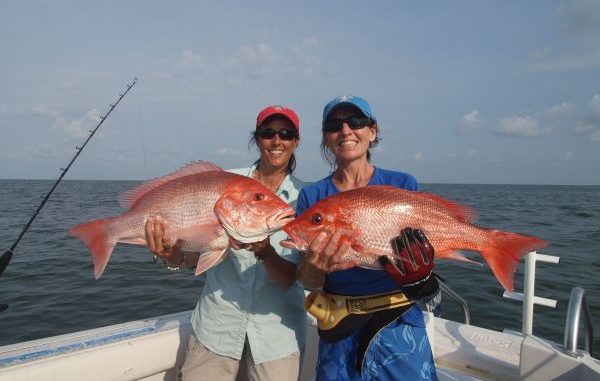
Agency withdraws from federal harvest-estimating program effective Jan. 1
The Louisiana Department of Wildlife and Fisheries said today that the fall red snapper season initally announced in July is unlikely to take place in the wake of federal fisheries managers’ announcement earlier this week that new catch estimates indicate the 2013 recreational quota already has been surpassed.
At issue is the federal Marine Recreational Information Program, used by NOAA Fisheries officials to estimate red snapper recreational landings in the Gulf of Mexico. The Gulf of Mexico Fishery Management Council said Tuesday that a “new methodology” was been used to esitmate catch and angler effort this year, and that change resulted in “higher than expected” catch estimates.
“This mismanagement hinders the recovery of the stock, and penalizes Louisiana anglers who now will likely not have an October federal red snapper season, even though they did not harvest over their alloted (catch) during the June season,” an LDWF press release states.
The new federal catch estimates, which threaten the proposed fall fishing season, prompted the LDWF to announce this afternoon that it is ending its participation in MRIP effective Jan. 1.
At the same time, Gulf of Mexico Fishery Management Council member Bob Shipp characterized the uncertainty surrounding the potential 21-day recreational fall red snapper season as “organized chaos.”
In place of MRIP, the LDWF will continue to move forward with the Louisiana Recreational Creel Survey that the agency contends is a more-precise data-gathering tool providing real-time quota monitoring, the agency’s news release states.
“… (O)ur department can no longer in good conscience participate in this program,” LDWF Secretary Robert Barham said. “Thanks to the participation of anglers in our mission to collect the best, most-real-time data through our Louisiana Creel program, I can say with great confidence that the state of the red snapper fishery in Louisiana will be better than ever moving forward.”
Dr. Roy Crabtree, the National Marine Fisheries Service regional administrator in St. Petersburg, Fla., was traveling and could not be reached for comment on LDWF’s decision to withdraw from the program.
Randy Pausina, head of fisheries for LDWF, said the decision to forego the MRIP survey was an easy one.
“As a state, we can no longer afford to sit by while our recreational anglers are penalized due to mediocre data,” Pausina said in the news release. “It is our obligation as fisheries biologists working with Louisiana licensed anglers to provide the best information for responsibly managing our fisheries. MRIP numbers are all over the place, and have been for years. NOAA’s data collection method was never created to be a quota monitoring tool.
“We saw a need for a program that could provide this real-time, more-robust information, so we simply created one.”
According to the LDWF release, MRIP landings estimates are so uncertain that it can only tag Louisiana’s most-recent catches (May through June 2013) to within a half million-pound range — from a low of 124,965 to a high of 681,055.
In a telephone interview today, Pausina said he wasn’t surprised by the inflated catch numbers released by NOAA Fisheries last month.
“They never cease to amaze me in everything they do. It’s comical,” Pausina said. “It’s absolutely comical that they can be so confident that there’s more fish out there based on their latest benchmark assessment to readjust the annual catch limits, go public with the potential of a 21-day fall season, (and) then get their numbers back and find out the entire annual harvest … has already been harvested.”
Gulf council member Shipp, a professor with the University of South Alabama’s Department of Marine Sciences, said the methodology change by federal officials came about mainly from getting more-accurate counts from boats returning to the dock in the late afternoon.
“Previously, the guys doing the counts would knock off at about 3 p.m.,” Shipp said. “We all know that 5 and 6 o’clock is when the big guns come in. And the samplers weren’t there in the old method.
“With the new method, they’re doing a lot better.”
He predicted the new numbers would have far-reaching impacts moving forward.
“The stock assessment itself is based, in part, on the landings data of the recreational fishery,” Shipp said. “With this change in methodology, we’re going to have to go back years and years to re-examine all of this stuff.”
Shipp said he believes if all or part of the October season is actually scheduled, environmental groups could file an injunction to stop it.
“Again, this whole thing is organized chaos,” Shipp said.
Pausina said that, despite his agency’s prediction that the fall season would be canceled, he believes it’s possible that at least a portion of the season will happen.
“My thoughts are that they’ll find some fish. They cannot not have a fall season after what they did,” he said. “They’ll figure out a way. How they’ll do it? I’m not a statistician, so I don’t know.”
Shipp said council members were told NOAA Fisheries was “recalibrating” the data collected with the new methodology and comparing it to the historical data collected previously.
“They’re trying to recalibrate the numbers and provide some justification for having the opening in October, “ Shipp said. “There’s no doubt they would like to do it. But they just need a rationale, and that’s what they’re trying to generate.”
Shipp said he expects to hear from NOAA Fisheries very soon on whether the fall recreational season will happen.
“We were told they’d try to have a plan available by the end of this week,” he said. “So I’m kind of on hold here. I suspect that any day now we’re going to hear something one way or the other.”
However, NOAA spokesperson Kim Amendola emailed LouisianaSportsman.com this afternoon saying the decision might take longer.
“We are working on the analysis, and will make an announcement about the season as soon as possible,” Amendola wrote.


